Abstract
The problem of maintaining independence between response rates and reinforcement probabilities when determining the effect of varying the response-reinforcement contingency upon free-operant behavior was solved by programming local reinforcement probabilities for response and no response on a second-by-second basis. Fifty-seven rats were trained to lever-press on schedules of water reinforcement involving different values of contingency. All rats were first trained on a high positive contingency and then shifted to less positive, zero, or negative contingencies. Under these conditions, rate of lever-pressing declined appropriately when the contingency between response and reinforcement decreased or was made negative. The decline in rate produced by a zero contingency cannot be attributed to extinction, since the probability of reinforcement given the occurrence of a response was the same as for the positive contingency from which the shift to zero was made. That is, there was no change in the opportunity for response-reinforcement contiguity. It was concluded that the technique of programming local reinforcement probabilities offers promise for more critical examinations of the effects of contingency upon free-operant behavior.
Keywords: contingency, appetitive conditioning
Full text
PDF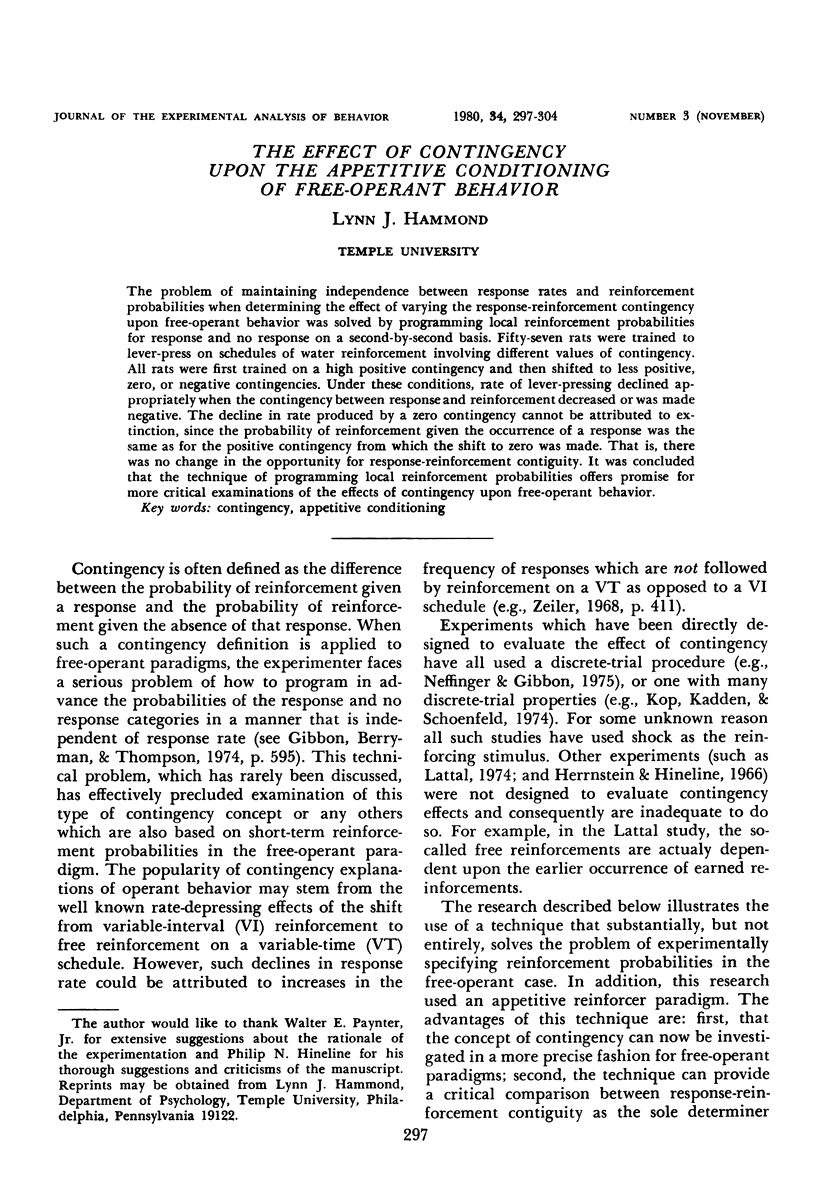
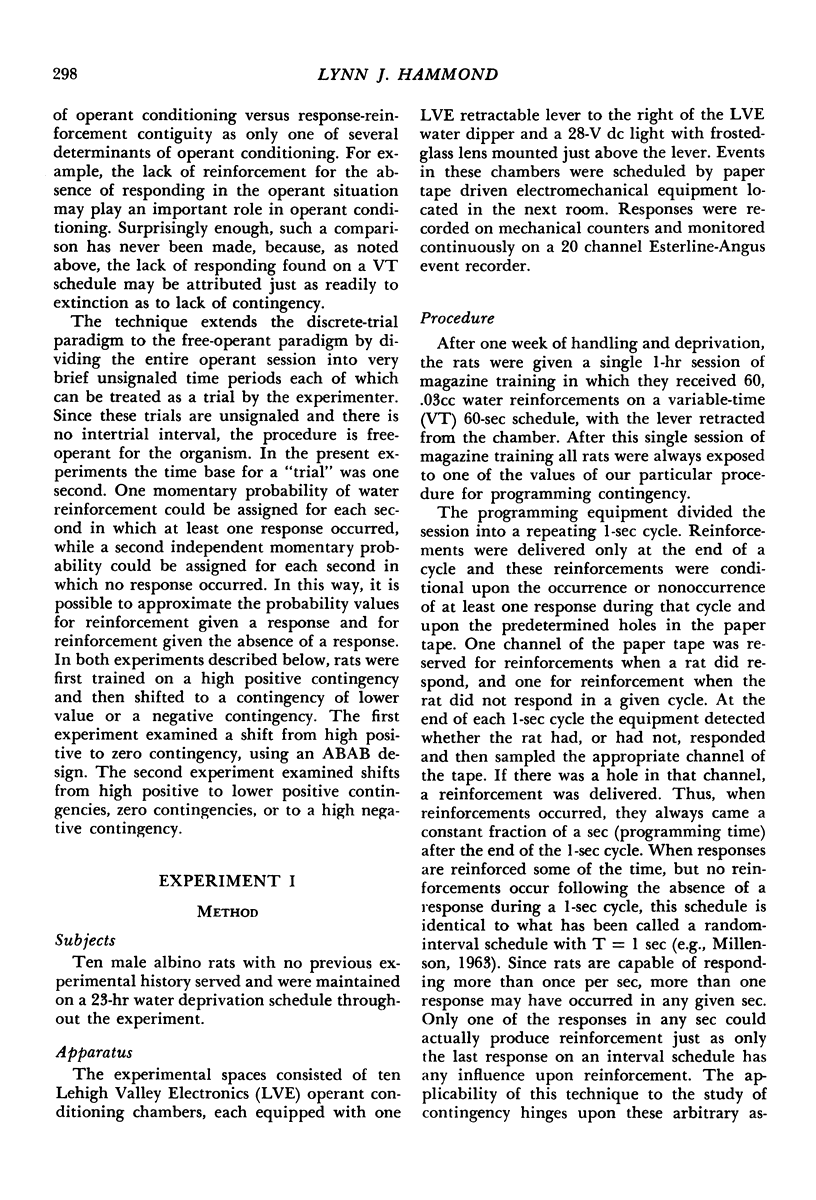
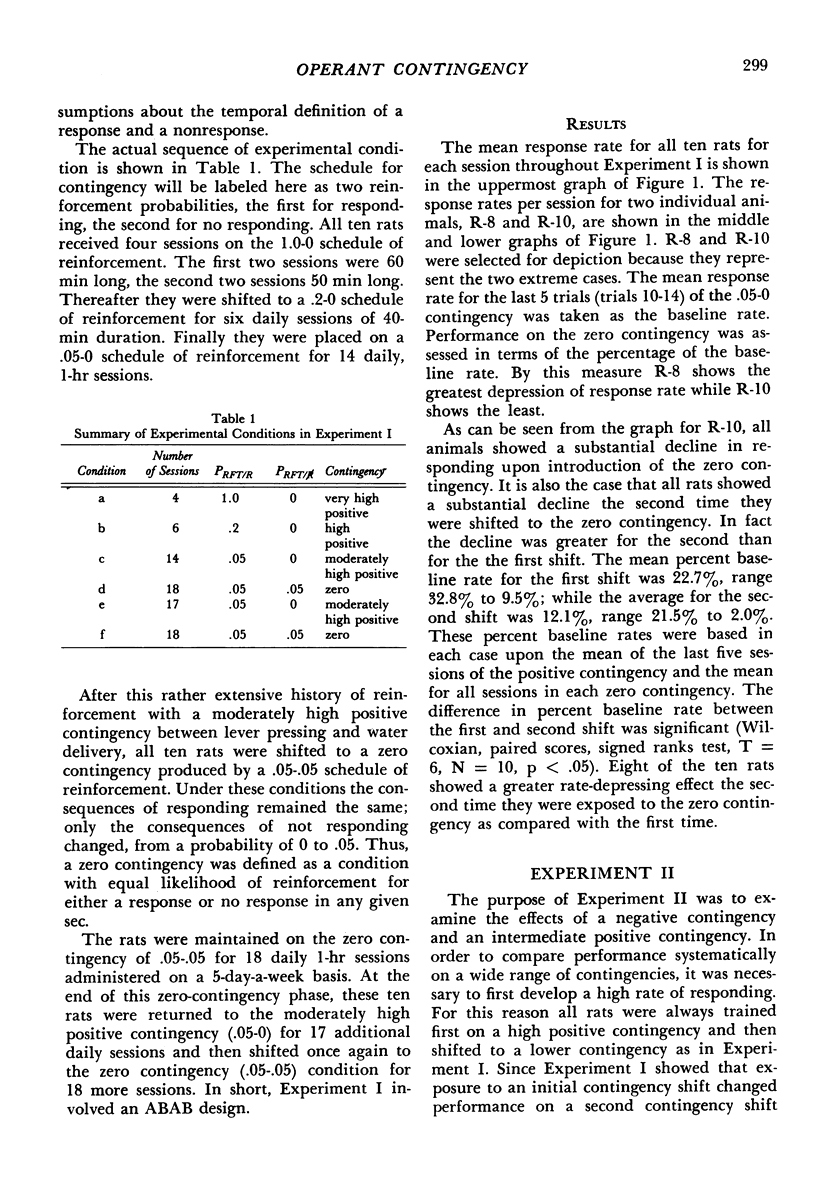
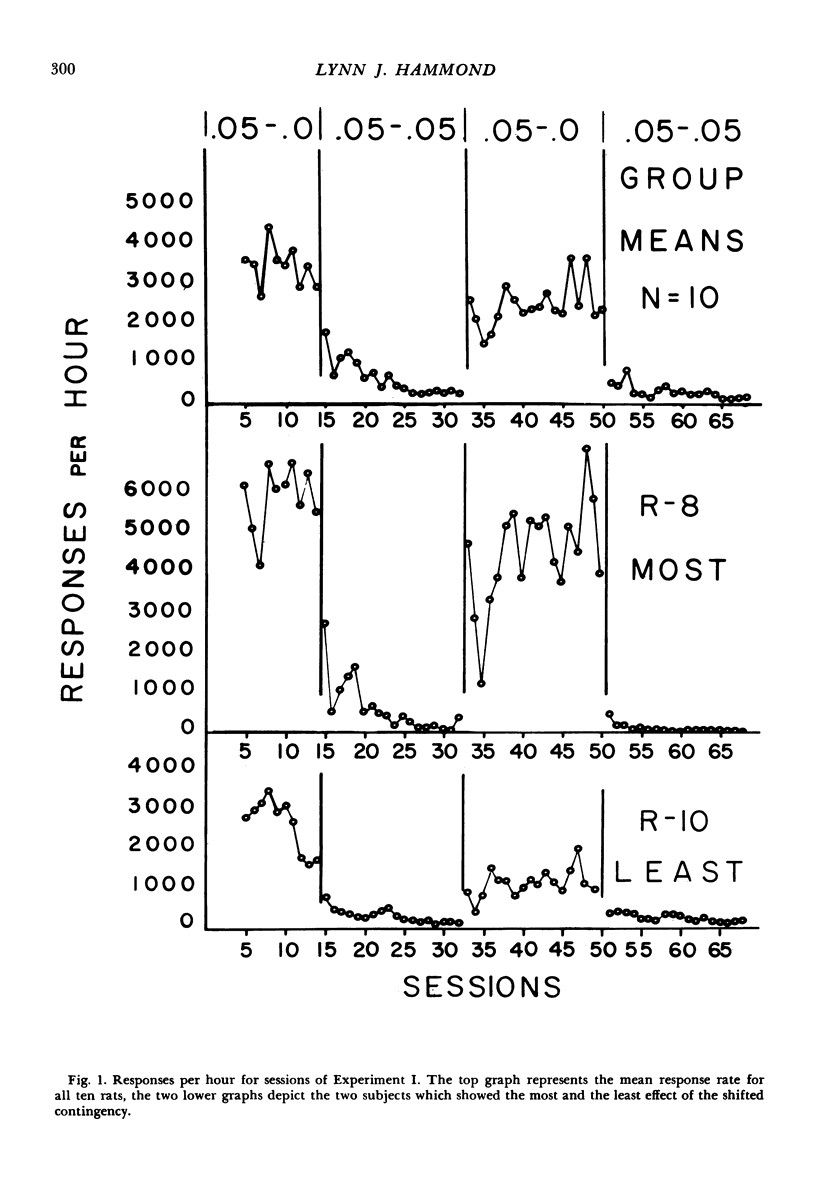
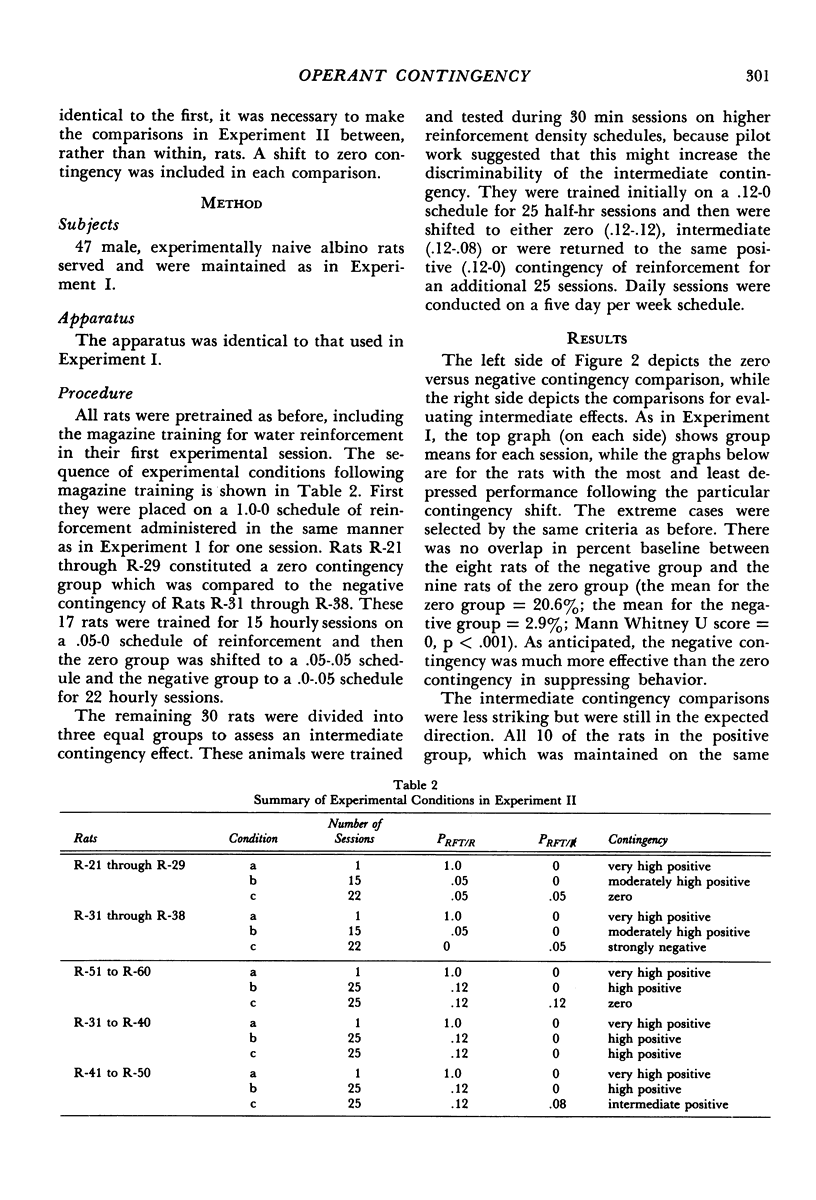
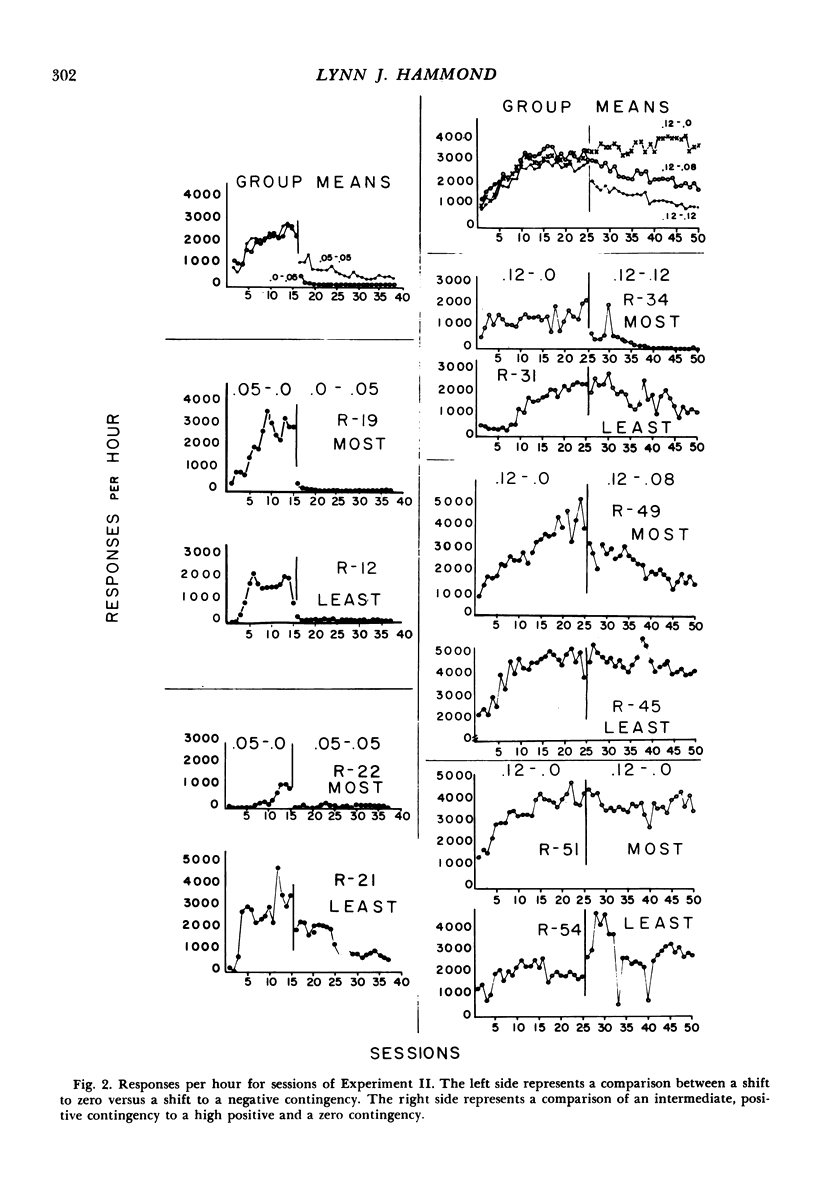
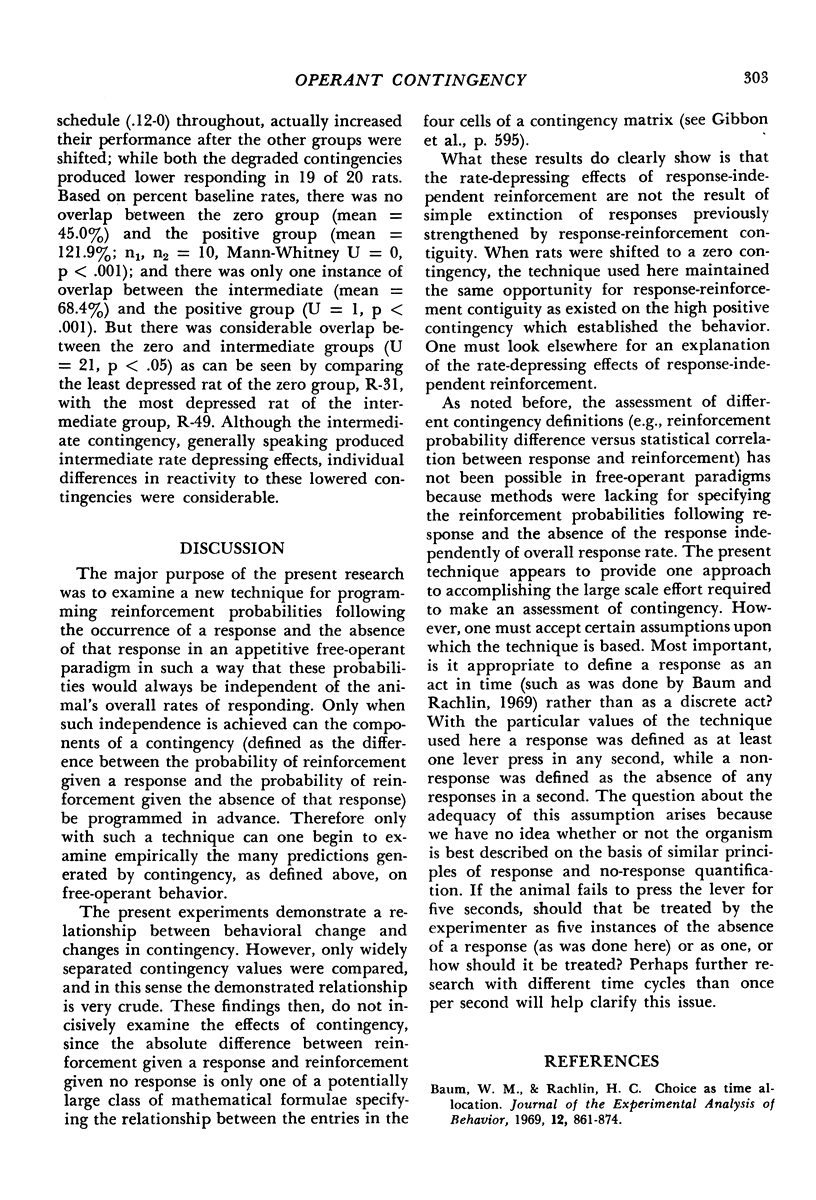

Selected References
These references are in PubMed. This may not be the complete list of references from this article.
- Baum W. M., Rachlin H. C. Choice as time allocation. J Exp Anal Behav. 1969 Nov;12(6):861–874. doi: 10.1901/jeab.1969.12-861. [DOI] [PMC free article] [PubMed] [Google Scholar]
- Gibbon J., Berryman R., Thompson R. L. Contingency spaces and measures in classical and instrumental conditioning. J Exp Anal Behav. 1974 May;21(3):585–605. doi: 10.1901/jeab.1974.21-585. [DOI] [PMC free article] [PubMed] [Google Scholar]
- Herrnstein R. J., Hineline P. N. Negative reinforcement as shock-frequency reduction. J Exp Anal Behav. 1966 Jul;9(4):421–430. doi: 10.1901/jeab.1966.9-421. [DOI] [PMC free article] [PubMed] [Google Scholar]
- Lattal K. A. Combinations of response-reinforcer dependence and independence. J Exp Anal Behav. 1974 Sep;22(2):357–362. doi: 10.1901/jeab.1974.22-357. [DOI] [PMC free article] [PubMed] [Google Scholar]
- Millenson J. R. Random interval schedules of reinforcement. J Exp Anal Behav. 1963 Jul;6(3):437–443. doi: 10.1901/jeab.1963.6-437. [DOI] [PMC free article] [PubMed] [Google Scholar]
- Neffinger G. G., Gibbon J. Partial avoidance contingencies. J Exp Anal Behav. 1975 May;23(3):437–450. doi: 10.1901/jeab.1975.23-437. [DOI] [PMC free article] [PubMed] [Google Scholar]
- Zeiler M. D. Fixed and variable schedules of response-independent reinforcement. J Exp Anal Behav. 1968 Jul;11(4):405–414. doi: 10.1901/jeab.1968.11-405. [DOI] [PMC free article] [PubMed] [Google Scholar]


